One of the best ways to know Mexico is through its varying culinary traditions. While its capital city has numerous new and trendy spots that garner international attention, there are a number of businesses that have stood the test of time; and in a city with a long and tumultuous past, these places each still hold a piece of that history.
Some establishments have simply been doing a single thing very well for a very long time and still attract lines out the door every day. Others have a colorful history, hosting famous (and infamous) people. There are iconic places for those who know the city well, while others are hidden gems. And to visit any of them is a trip back in time, with every space inhabited with past ghosts but very much alive with the energy of the many souls who have passed through their doors.
This guide will lead you to some of Mexico City’s more well-worn establishments. The locations range from the humble, no-frills taco stand to the most grandiose and splendid of rooms. They are all still around for good reason, and provide a small window into the city’s past.
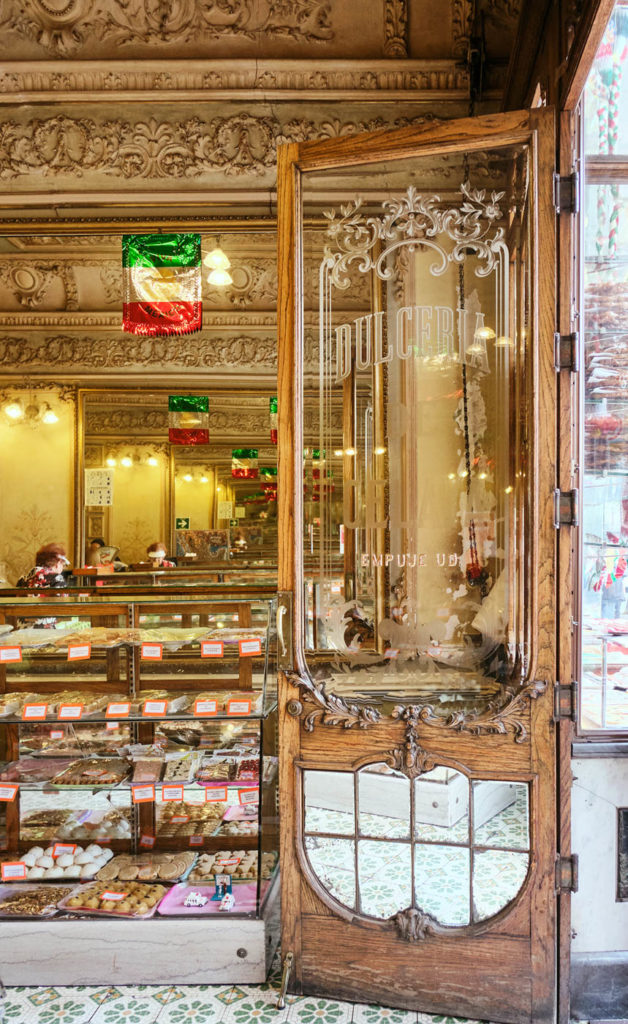
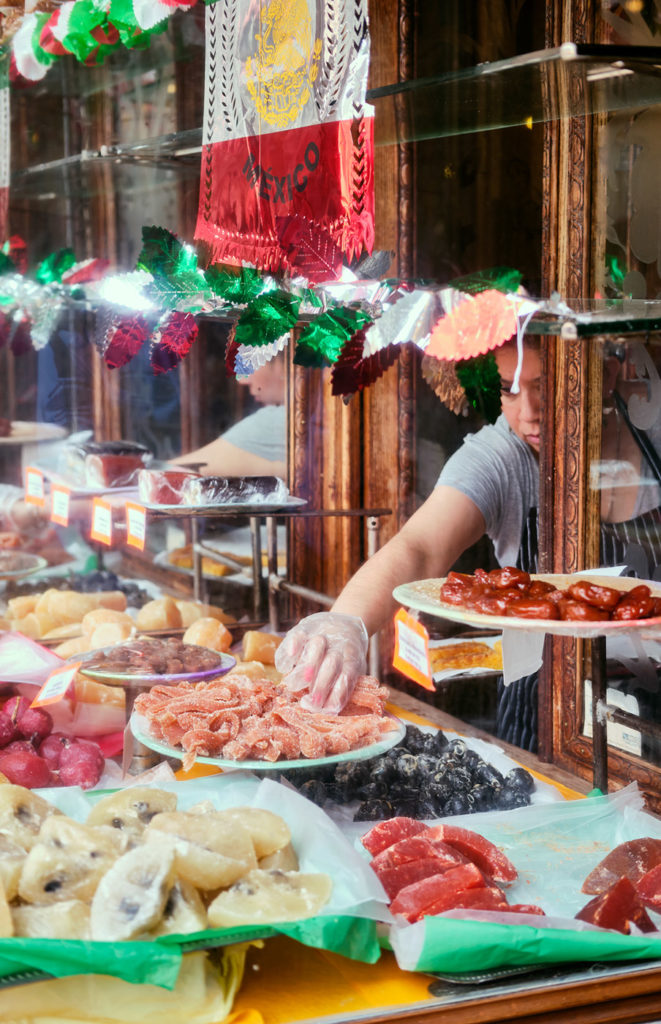
—
Dulcería de Celaya
Cinco de Mayo 39, Centro, Ciudad de México
Dulcería de Celaya was opened by the Guízar family in 1874, settling in its current location at the turn of the century. Today, not much has changed. They follow original recipes and the tiny ornate shop retains many historic details. Gilded and opulent, the space is a candy shop from the past. Trays of hand-made dulces fill the cases, candied fruits are piled high in the window, and buñelos are stacked on the shelves. You can treat yourself to quality regional Mexican sweets, or bring some home for gifts. Classics to try include mazapanes (a candy made from peanuts), a variety of delicacies made from coconut like arlequines and cocadas, as well as jamoncillo, a special occasion sweet made from dulce de leche (or cajeta). The rainbow of candied fruits are made with piloncillo, unrefined cane sugar commonly found in Mexican cooking. You can also find that classic Mexican flavor profile of sweet, sour and spicy in the form of tamarind candy with chile.
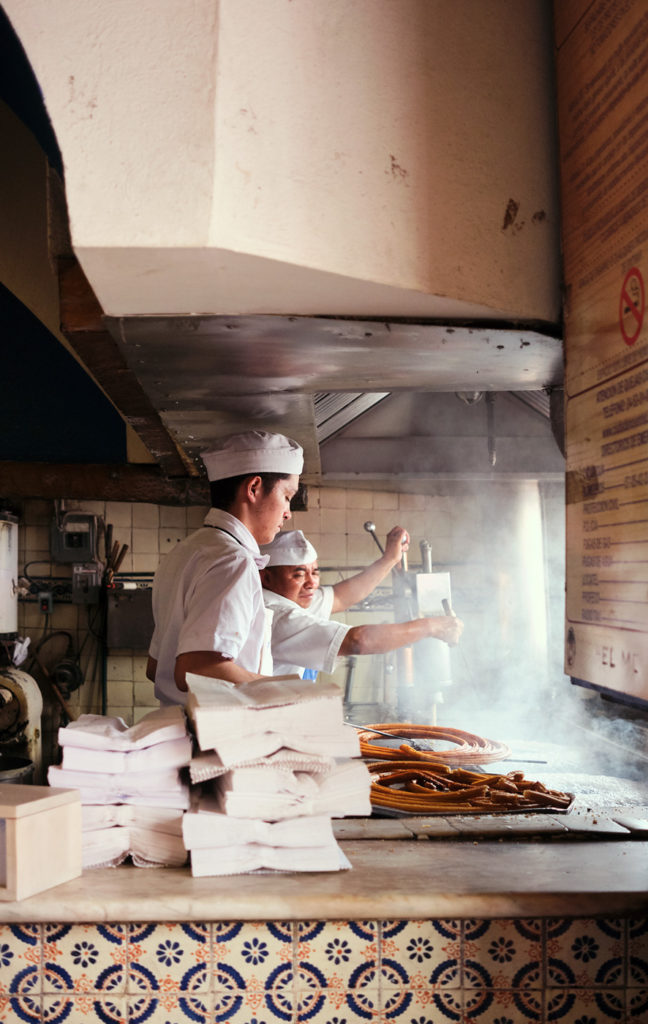
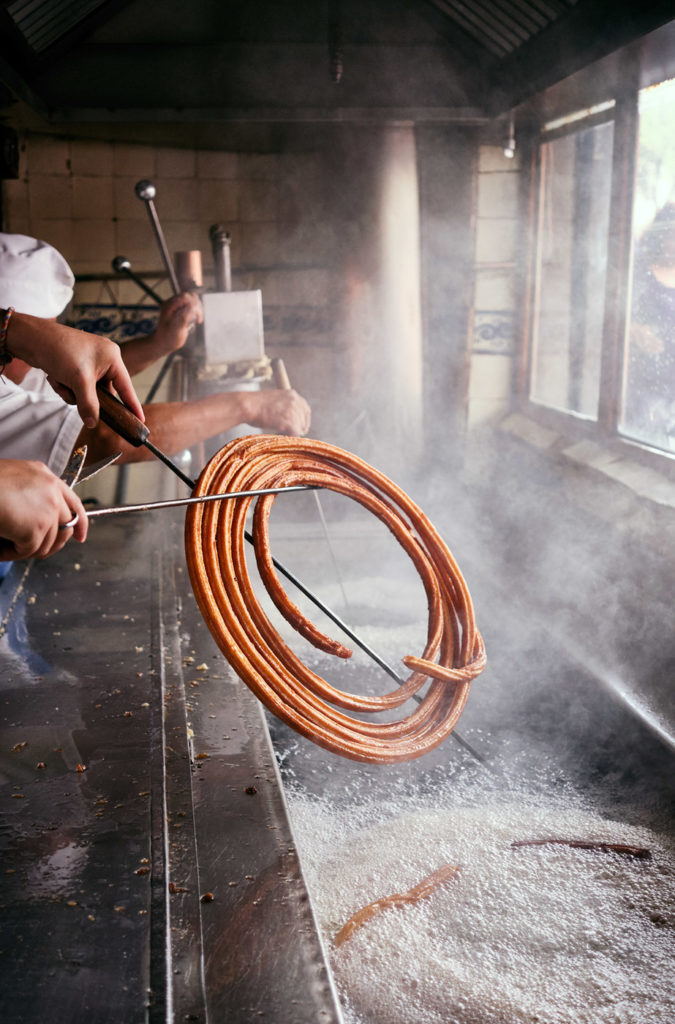
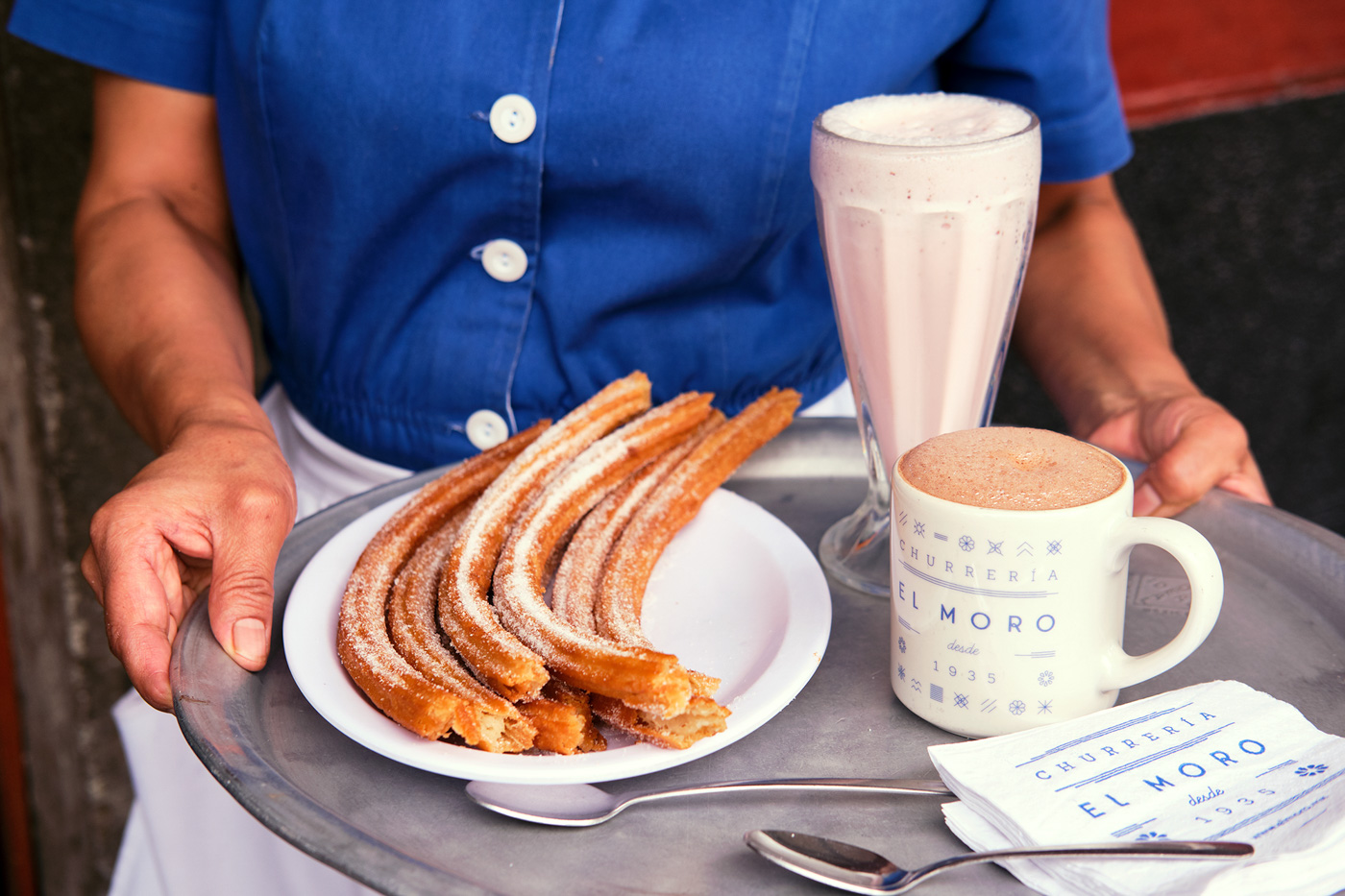
—
El Moro
Eje Central Lázaro Cárdenas 42, Centro, Ciudad de México
El Moro began as a cart in the Zócalo (central square) in 1933 and enjoyed enough popularity that its founder Francisco Iriarte opened a brick-and-mortar location nearby on Eje Central Lázaro Cárdenas in 1935, where it has operated ever since. The name “El Moro” and the tradition of churros came with Iriarte directly from Spain, where in the region he was from “el moro”—the moor—would push a cart selling his churros from village to village during festivals. Recognizing that Mexico had no tradition of the deep fried sugary treats inspired Iriarte to start making and selling them, and today they are found all over the city. Under his grandchildren, El Moro has recently expanded to thirteen locations, although the original is still open twenty-four hours and has a constant supply of fresh, hot churros, as well as a to-go line that commonly snakes out onto the sidewalk. All manners of people and classes occupy the tables, from huge tables of families to students on a date, each sharing a plate of churros and one of the seven different hot dipping chocolates.
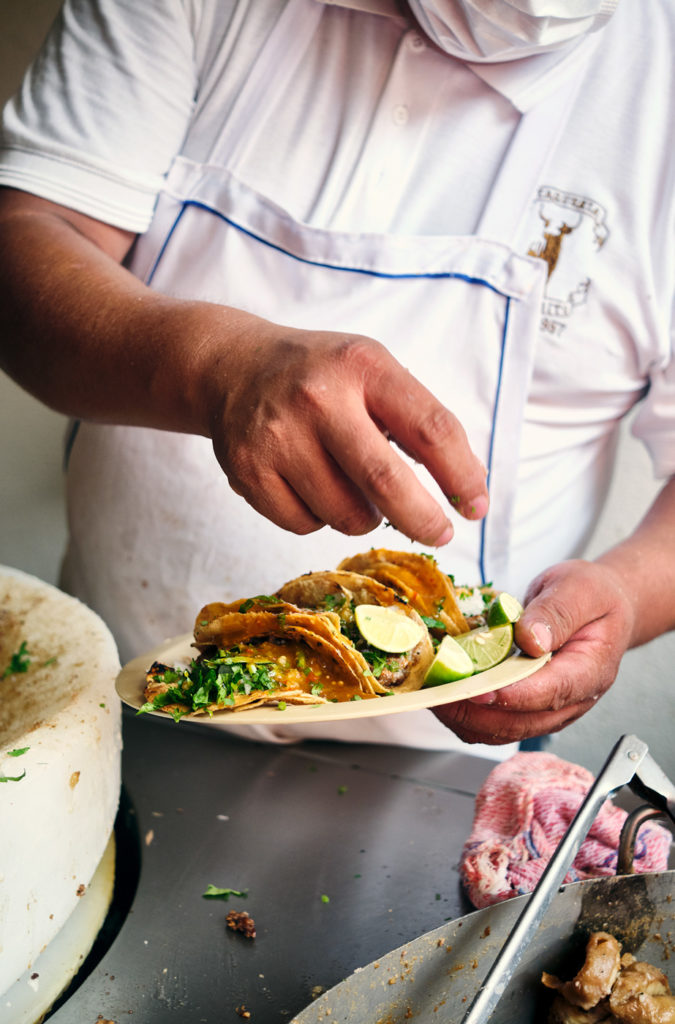

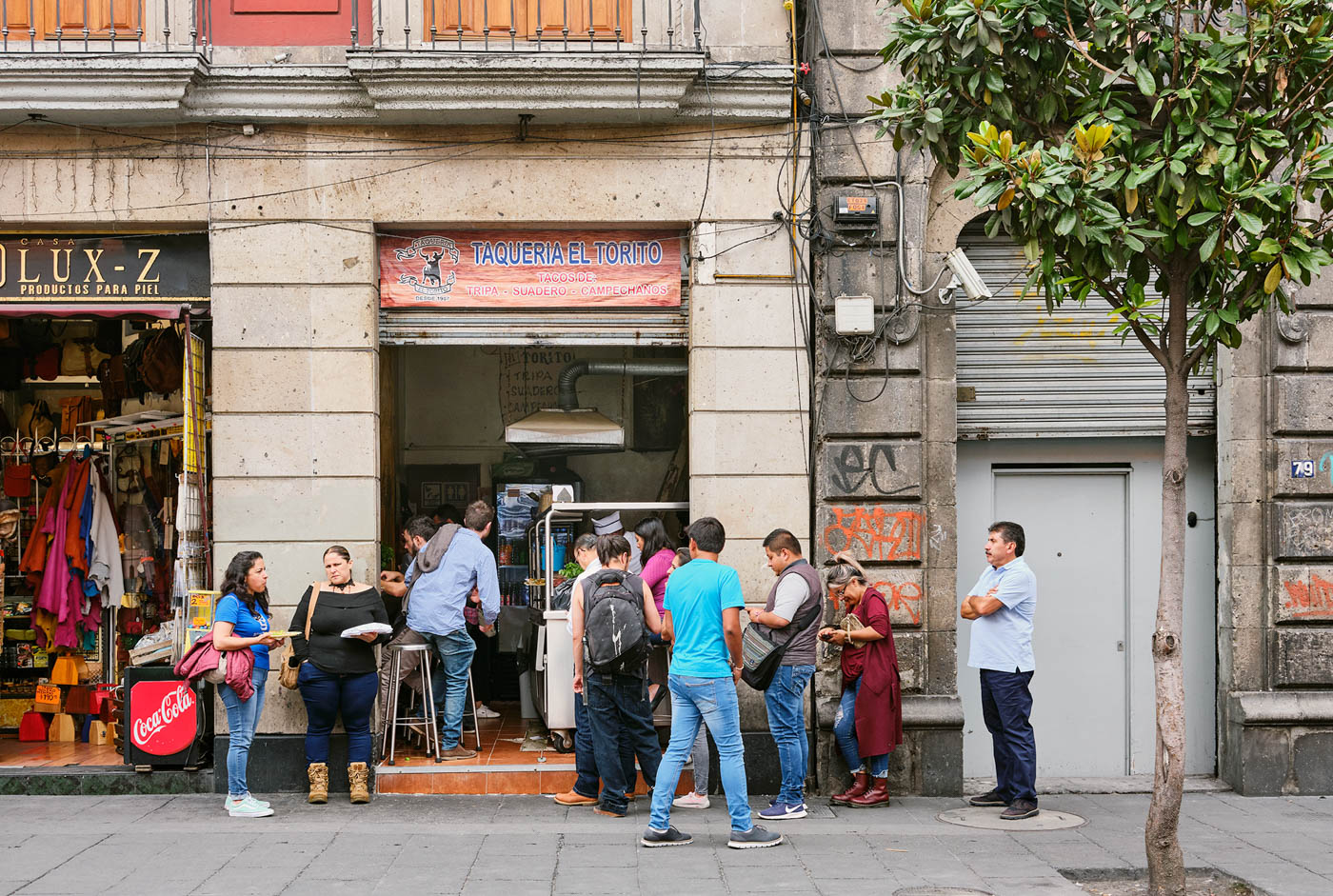
—
El Torito
Isabel La Católica 77, Centro, Ciudad de México
El Torito, a hole-in-the-wall downtown taco joint, has been in business since 1957 and is still run by the founding family, and a constant line indicates there are no signs of slowing down. Only three types of beef tacos are offered: suadero (a muscular cut of beef slow cooked in fat), tripa (long-simmered cow intestines), and campechano (a combination of the two). Your order of meat and tripe is pulled from a vat of bubbling fat and chopped with a cleaver, then placed face down on the choricera (a flat top to crisp up the contents), then topped with onion, cilantro and salsas (red and green). The resulting experience is a tasty, greasy, spicy delight.
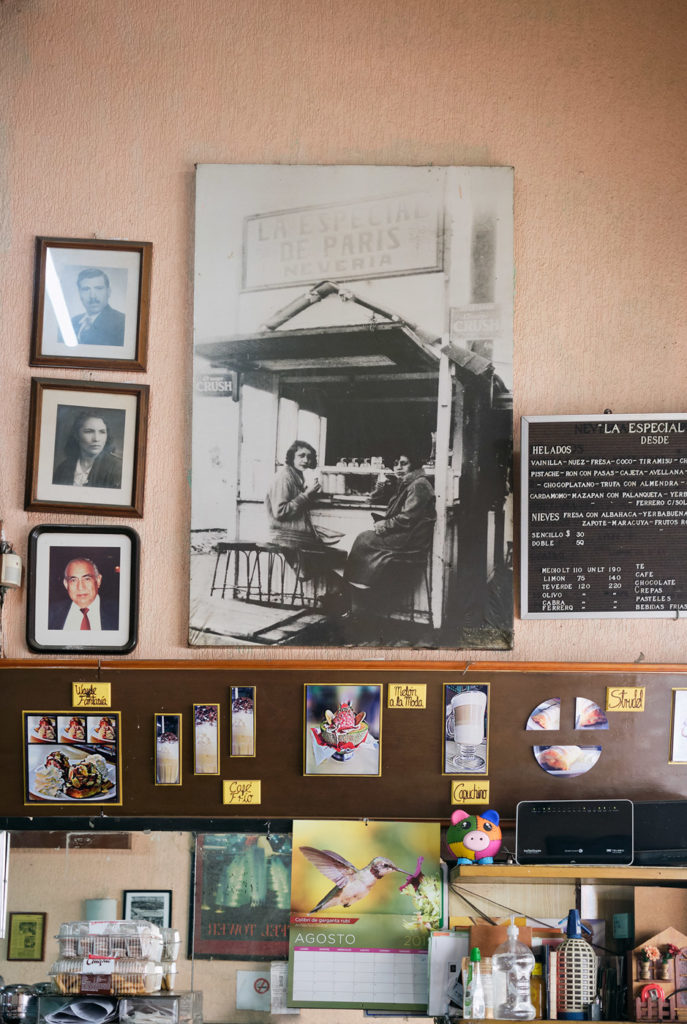
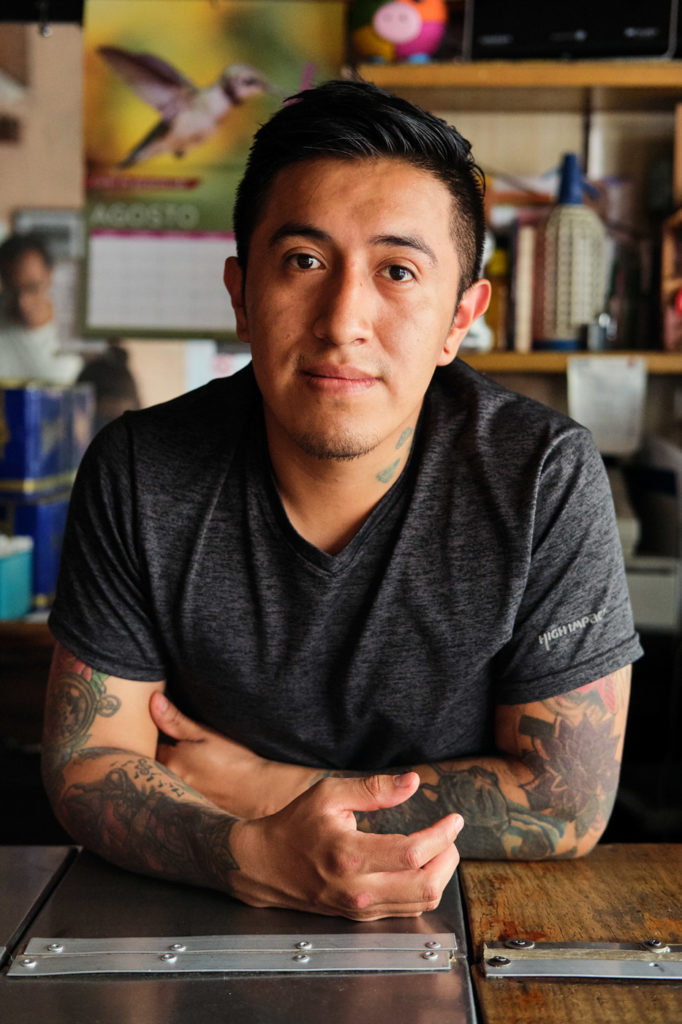
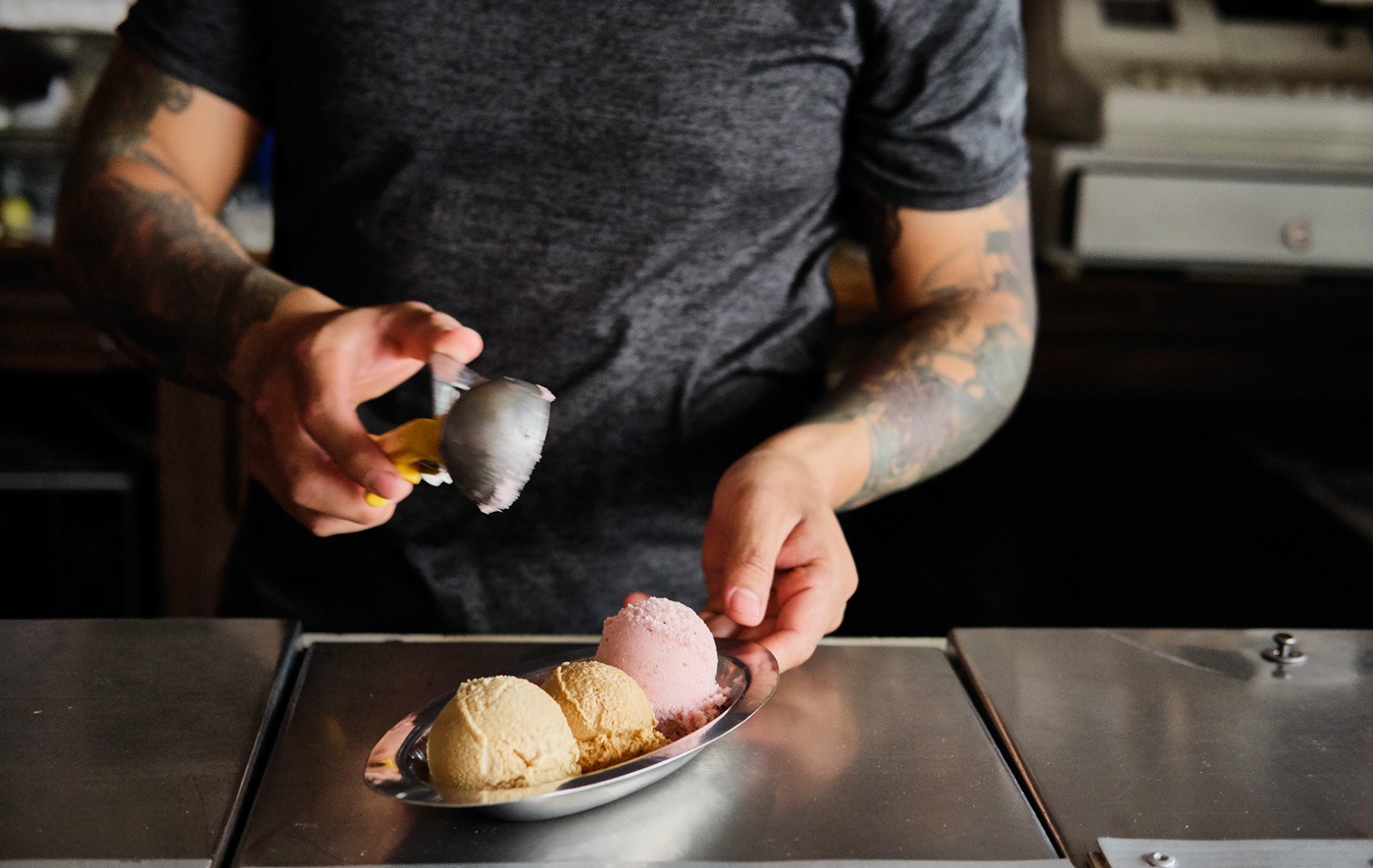
—
La Especial de París
Insurgentes Centro 117, San Rafael, Ciudad de México
La Especial de París began as a wheeled cart in 1921 stationed in the streets of Ramón Guzmán and París by Domingo Lozada Torres. He sold only two flavors: lime and vanilla. The cart then turned into a wooden puesto in 1929 and eventually outgrew the little stall, moving around the corner onto Insurgentes where it operates today. This is the perfect place to try a classic Mexican-style ice cream. They use all-natural ingredients following original recipes and are especially proud of their vanilla bean flavor, made with real vanilla pods. There are also more unusual options, like tobacco, olive oil, and goat cheese, as well as seasonal flavors such as pomegranate or mandarin. Three generations of the Lozada family currently continue to offer their classics in this unassuming spot steps from Monumento a la Revolución.
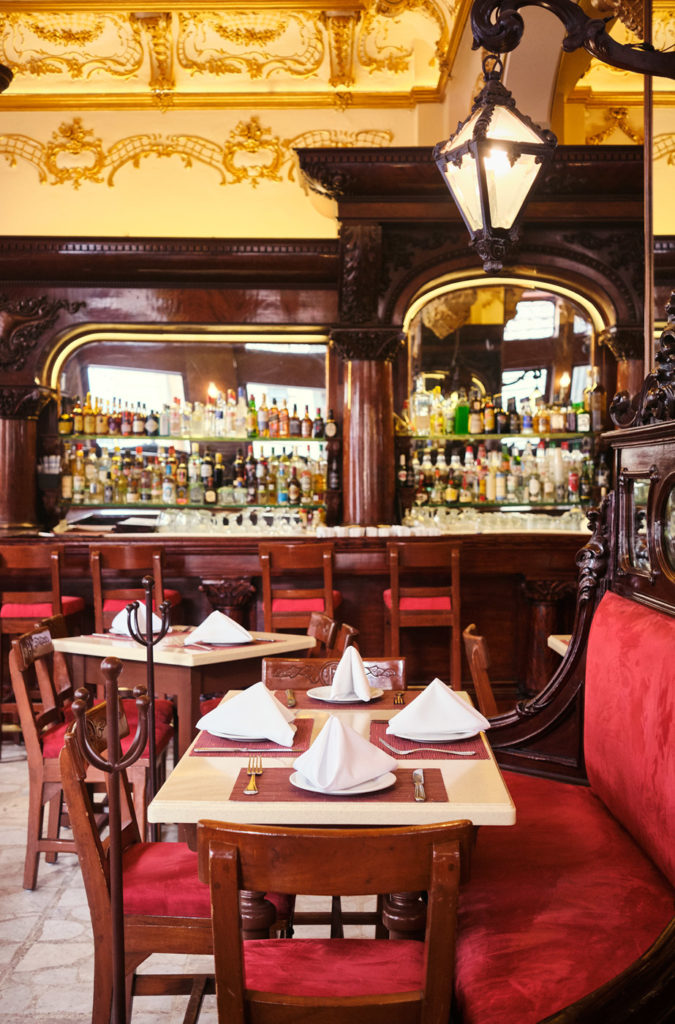
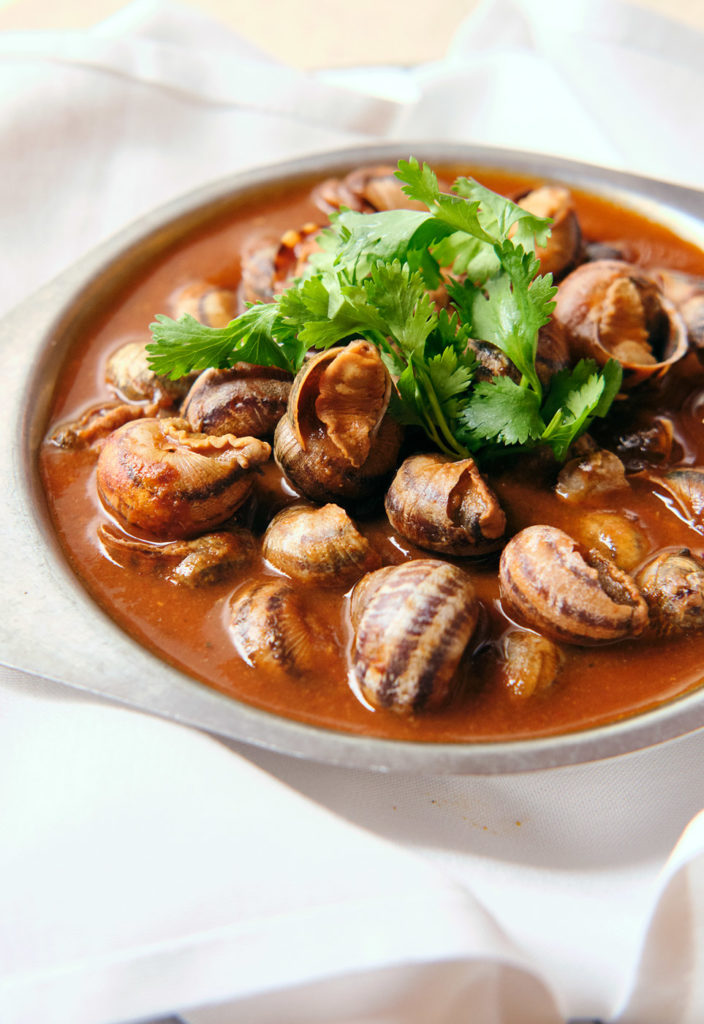
—
La Ópera
Cinco de Mayo 10, Centro, Ciudad de México
Two French sisters opened La Ópera as a pastry shop in 1876. Two decades later it moved to its current location on Cinco de Mayo and became a bar. The lavish French-style interiors with red velvet, dark wood, and ornate light fixtures are original from the turn-of-the-century, including the magnificent bar made in New Orleans. The space has hosted many notable figures over the years, including revolutionaries Emiliano Zapata and Pancho Villa—the latter put a bullet hole in the ceiling that remains there to this day. Writers like Octavio Paz, Carlos Fuentes and Gabriel García Márquez, as well as most of the presidents of Mexico, have also held court there over the years. Despite being on the tourist trail, the space retains its historic charm and is worth a stop for a drink while touring the Centro—and maybe snacking on one of their house specialities, like snails in chipotle sauce.
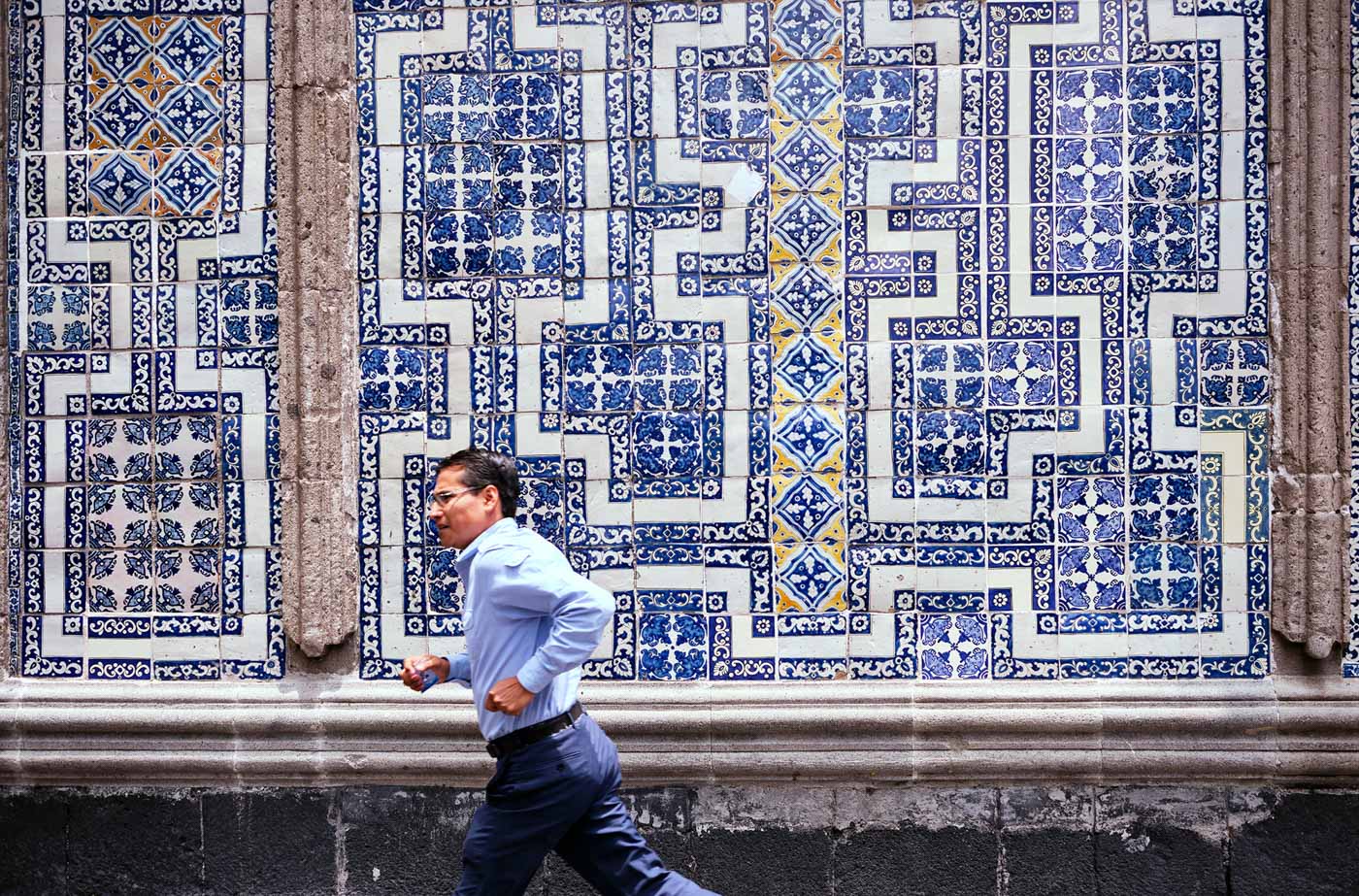
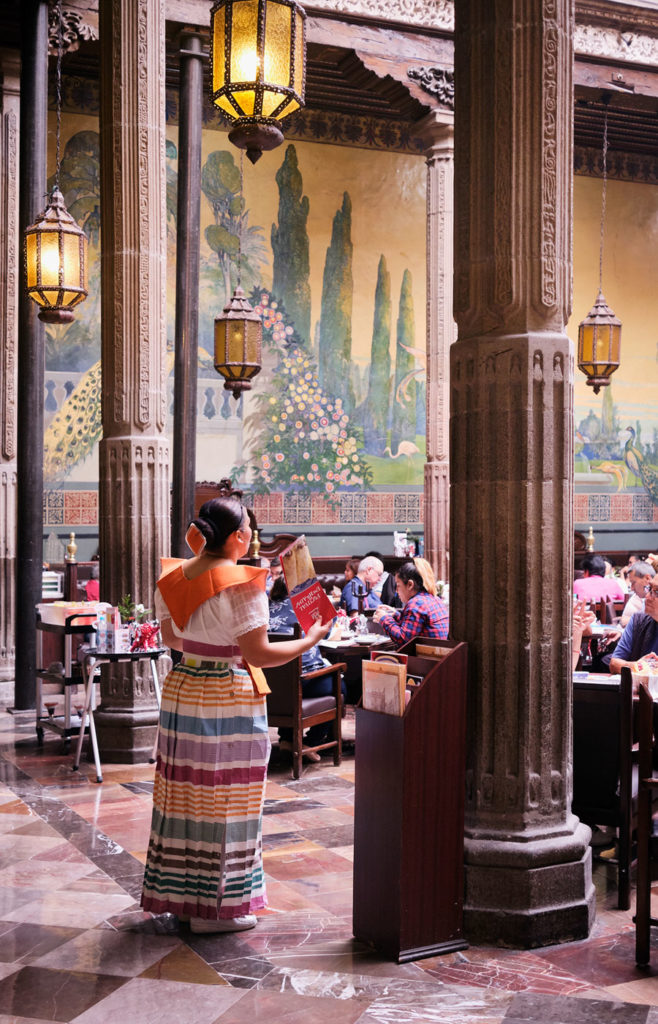

—
Casa de los Azulejos
Francisco I. Madero 4, Centro, Ciudad de México
Casa de los Azulejos is an iconic building in the center of Mexico City, built by the Count del Valle de Orizaba in the 1700s and subsequently occupied by persons holding this title and their families until the late nineteenth century. The famous blue, white and yellow tiles were installed on the facade in the mid-1700s, and from 1881 it became the exclusive, members-only Jockey Club, where various intellectuals and elites rubbed shoulders; and after that, it became the Casa de Obrera Mundial (Worldwide Worker’s House). In 1917, two enterprising American brothers who had a small business nearby, saw the potential of the building and turned it into the flagship store and restaurant for what today is a large department store chain called Sanborns. They spent over two years remodelling the space, which is baroque and art nouveau with many beautiful details, as well as commissioned a mural in the stairwell by the famous Mexican muralist José Clemente Orozco (painted in 1925). You can enjoy this impressive room today much like when it first opened. You’ll find just as many locals as tourists in this ever-popular spot.

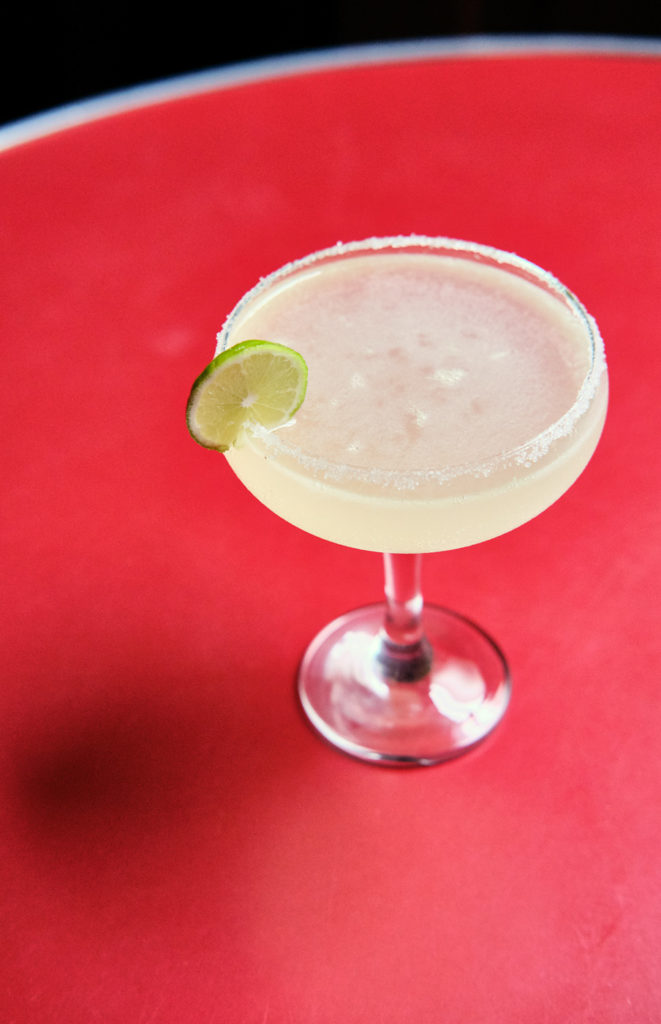
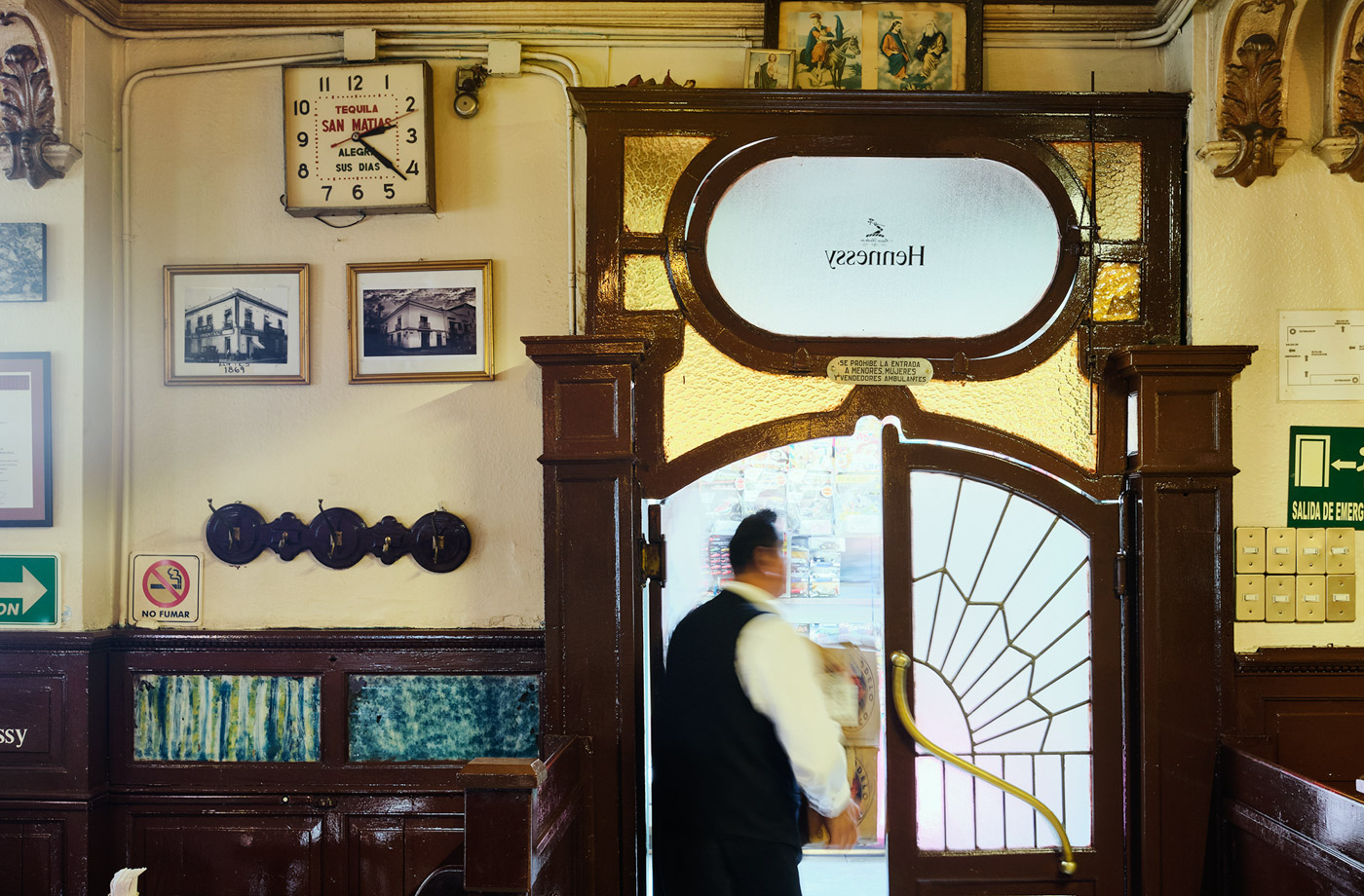
—
El Tío Pepe
Independencia 26, Centro, Ciudad de México
Tucked away in the tiny Chinatown district at the corner of Doleres and Independencia Avenue, between red paper lanterns and fortune cookie stands, you’ll find two sets of saloon doors that lead you into a classic Mexico City cantina called El Tío Pepe. Rumored to be the oldest bar in the capital—opened in 1869—you can still enjoy its old Mexico City atmosphere over a cold beer or tequila (they also make a mean margarita, but prepare yourself for a strong one). Infamously referred to in William Burroughs’s Junkie, this place feels like it’s one hundred years old (it is), and the six original booths and four tables have been meticulously preserved and maintained by the owners. Tío Pepe welcomes a diverse clientele, despite the old plaques still displayed that proclaim women, children and travelling sellers are not permitted (women were first allowed in 1982). You’ll find old men, young couples, office workers, politicians and the odd tourist deep in conversation in one of the booths, or chatting with one of the friendly bar staff.
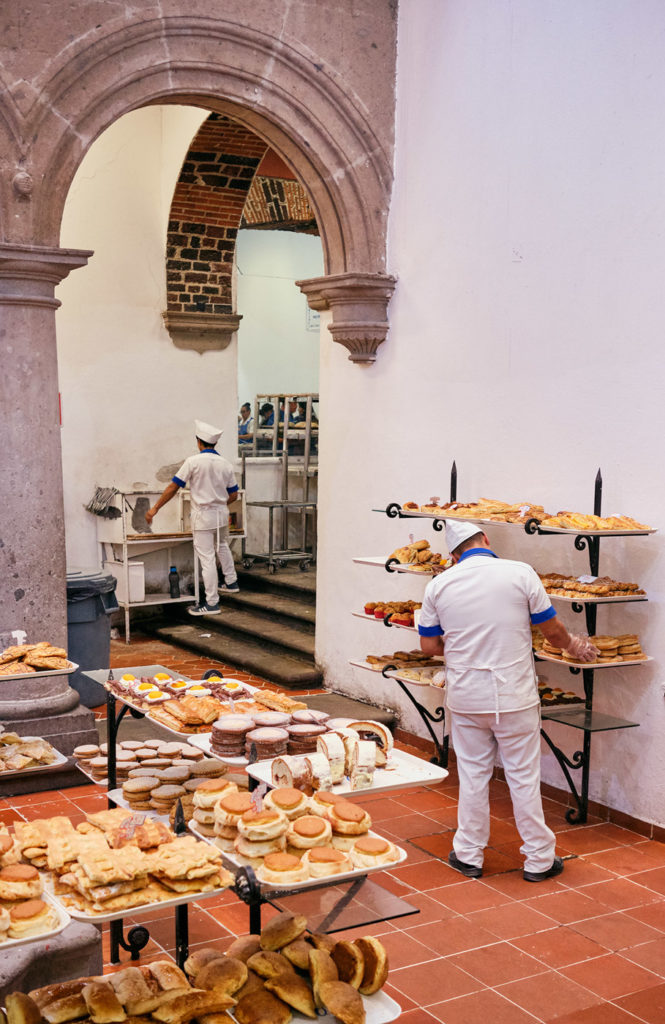
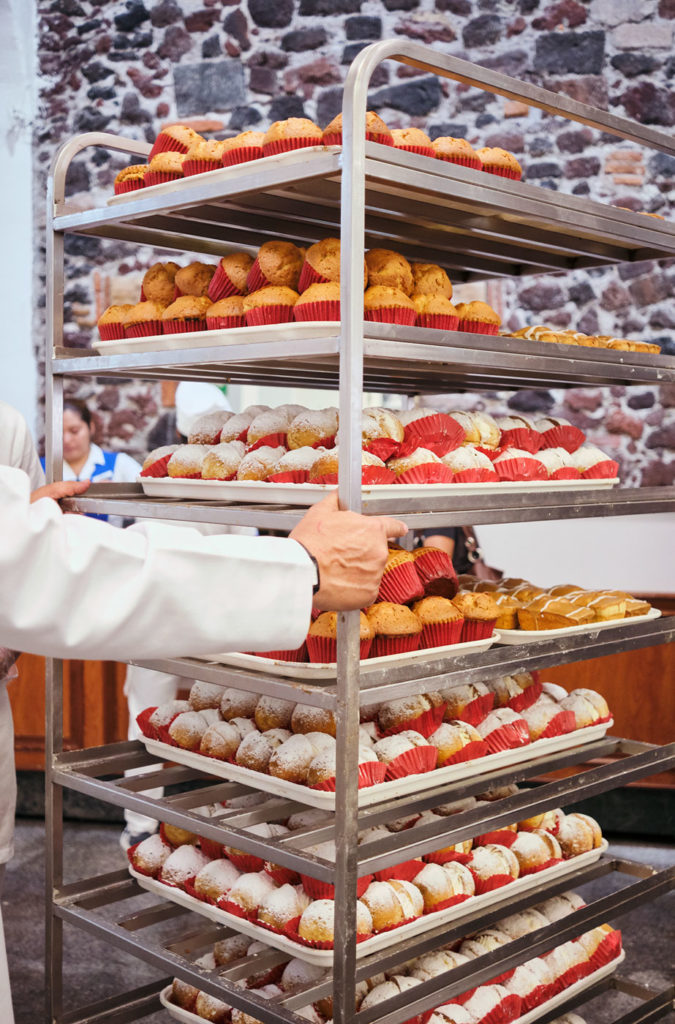
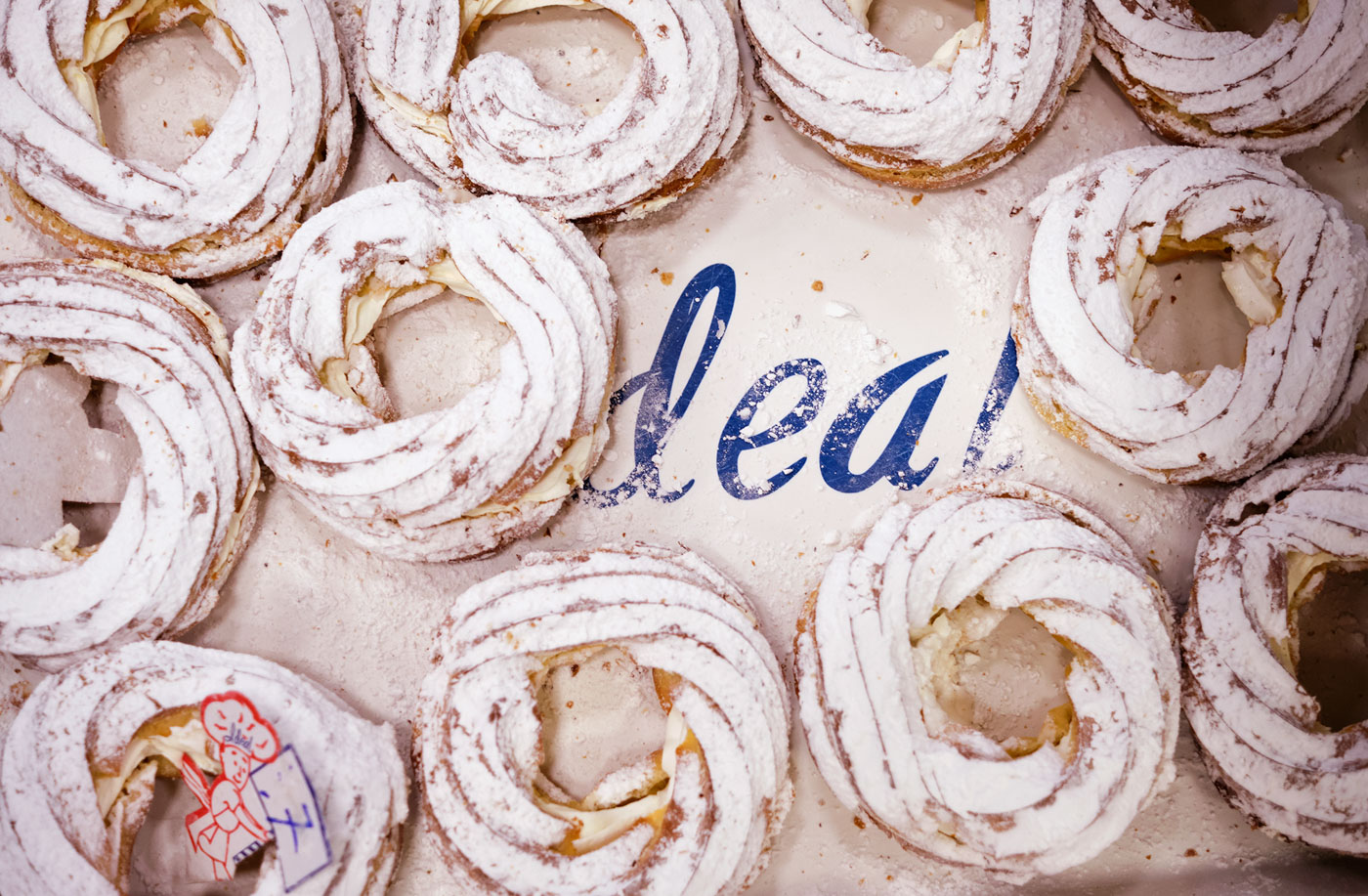
—
Pastelería Ideal
16 de Septiembre 18, Centro, Ciudad de México
Pastelería Ideal, family-owned since it opened in 1927, is the quintessential Mexico City purveyor of pan dulce (Mexican pastries), along with extravagant cakes, cookies, jellies and more. A feast for the eyes, each day the tables are piled high with goodies. Grab a tray and a pair of tongs and load up on conchas, bigotes and cuernitos. Some of their best sellers are the besos, meaning “kisses”—a cake sandwich filled with a whipped cream-style filling. The blue, white and red packaging is a pervasive, a part of the fabric of the city. In the morning, hoards of street vendors purchase their Ideal goods and then fan out across the metropolis to sell them on street corners with coffee. Everything here, although produced in large quantities, is still made by hand.





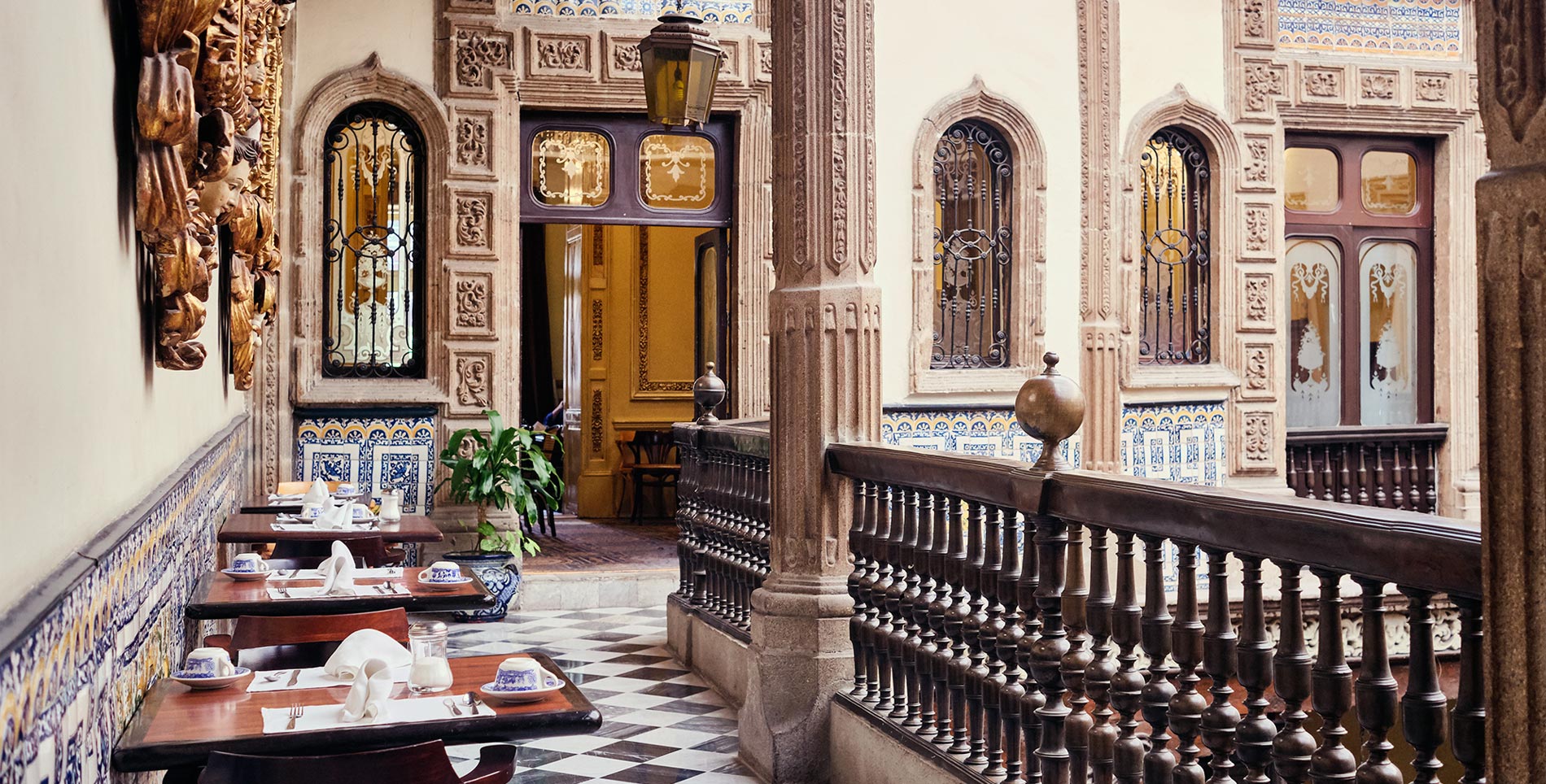

Our comments section is for members only.
Join today to gain exclusive access.